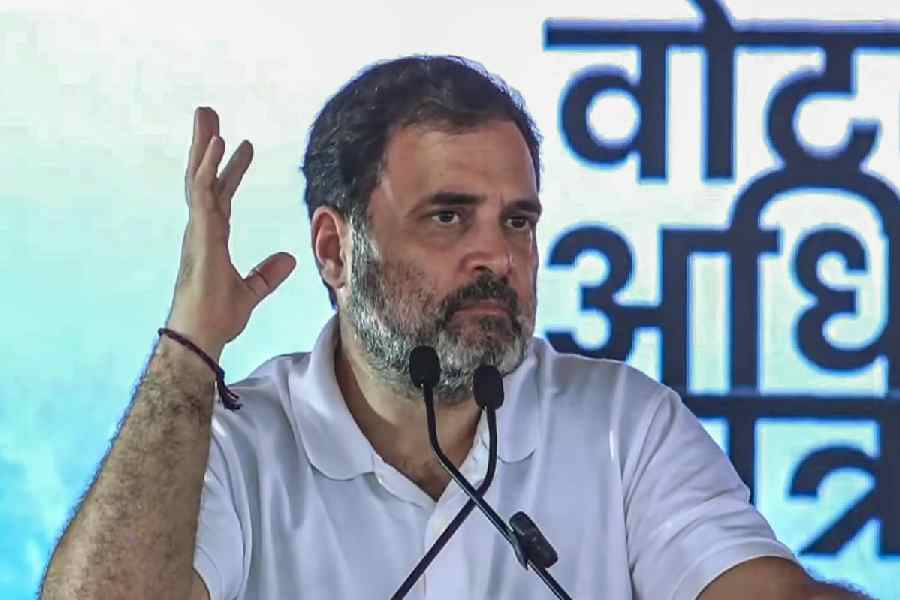According to yogic understanding, except for parasitic and viral infections, almost all diseases start in the mind and if not dealt with in time, are manifested in some part of the body. These diseases are called psychosomatic diseases. Yoga deals with such problems by teaching us methods that address not only our bodies but also our minds. It adopts a somato-psychic approach and if we do yoga regularly, we can not only heal the body but also re-train the mind. Medicines help, but only for a while. They usually play a supportive role and can never initiate a normal, healthy and balanced approach to life. We have to find a suitable combination of personality traits, work, rest, exercise and diet to inject a sense of harmony in our lives. Yoga says that we cannot change the world, but we can change how we react by changing ourselves. For the sake of inner peace, we need to learn how to deal with our minds and the games it plays with us constantly. All of us are influenced constantly by thoughts, fears, anxieties, insecurities, hopes and expectations. How we deal or don’t deal with them will have an impact on our overall sense of well-being.
 |
| Ardha Shalabhasana |
 |
| Bhujangasana |
 |
| Vajrasana |
Overcome stress and gastric problems
question: I am 29 and suffer from chronic colitis and gastric problems. Medicines haven’t worked. Can you suggest some asanas that will cure me? I am also suffering from chronic follicular tonsillitis and stress. Please advise.
Raju Dey, Silchar, Assam
Answer: To overcome colitis and gastric problems, you will have to rectify the digestive process using a combination of yogasanas and a diet which enables the digestive system to heal. In such cases, milk is very helpful. It is a complete food and is nutritious and leaves no residue in the alimentary canal. Do the pawanmuktasana anti-gastric series daily, vajrasana after meals and after three months, add bhujangasana and ardha shalabhasana. For steadying the mind, at the end of each day, lie down in a comfortable posture and start thinking over the day’s events. Ask yourself “What did I do before I came to bed?” “What did I do before that?” and so on, till you go back to the time you woke up in the morning. As you go through the events of the day, you will be able to recollect a situation that made you feel positive. Don’t think about it too deeply. Just mull over it as a witness in an objective, detached manner. Tell yourself, “Yes, that felt good but let me move on.” Continue the backward scan. As you do so, you will recollect a situation when you got angry or felt upset or hurt. Once again, don’t get involved, simply be aware of how you felt and move further back in time till you come to the beginning of the day. Practise this every day and you will benefit from it. This is a pratyahara practice. As you practice this regularly, you will be able to develop a sense of detachment to the ups and downs of daily life. This is a very powerful yogic quality, which strongly influences the way you think, feel and act.
question: Is it advisable to fast once in while ? Does it help ?
Jaya Kothari, Calcutta
 |
| Bhramari Pranayama |
 |
| Tadasana |
 |
| Shashankasana (I) |
 |
| Shashankasana (II) |
Answer: Fasting gives time to the digestive system to rest and recoup. Every time we eat, be it a snack or a meal, the digestive system starts working. This can take as long as three to four hours in case of rich and oily food. After doing its work, the digestive system needs sufficient rest. If we keep snacking, the digestive system doesn’t get any rest and in due course, it starts showing signs of malfunctioning.
It is, therefore, an excellent idea to skip a meal once in a month or so. However, this need not be a complete fast. Have something very light ? maybe a small bowl of yoghurt or fruit juice or soup.
question: Some people recommend drinking water during meals while others insist this is bad. What is the yogic point of view ?
Ashutosh Deb, Calcutta
Answer: It is best not to drink water one hour before and one hour after a meal. Water dilutes the digestive juices, which are released when we eat. You will find that the feeling of heaviness after meals will dissipate. Digestion will also improve.
Control your sugar level
question: I am 50 and my medical report shows my metabolic condition tending towards diabetes. My physician has advised me to walk briskly every morning. This is not possible on a regular basis because I am working. However, I plan to start but I’m not sure if I’ll be able to continue. Can you suggest some effective asanas to control diabetes?
A.K.Roy, Guwahati, Assam
Answer: Don’t plan any more, just start walking from today. It is good that you want to do something about your situation. You might give walking a miss once in a while but that only means that you will be regular otherwise. Think positive and that will help. No one can be so busy as to not be able to spare half- an-hour before or after work. Asanas also take time, if you do them slowly and with awareness and want to really benefit from them. This is not time wasted, but time invested. Practise the pavanmuktasana anti-rheumatic series of the Bihar School of Yoga for three months to prepare your body and mind. Then add tadasana, shashankasana and bhujangasana. For relaxation, do abdominal breathing for five to 10 minutes and bhramari pranayama at night. Follow the doctor’s advice on diet. A high fibre, low fat and low sugar diet is advisable. These steps will also prevent you from developing high blood pressure and will keep heart diseases at bay.
If you have any queries for this section, send them to Fitness (Yoga), Features Section, The Telegraph, 6 Prafulla Sarkar Street, Calcutta 700 001. You may also email them to: themes@abpmail.com with ‘yoga’ in the subject line. Gautam Sen of the Bihar School of Yoga will reply to your queries










